Research Highlights
Research Highlights
A selection of highlights culled from publications by HAO staff.
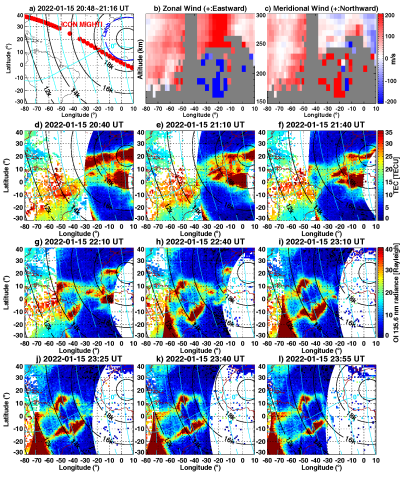
Pronounced suppression and X-pattern merging of equatorial ionization anomalies after the 2022 Tonga volcano eruption
Wenbin Wang, Liying Qian, et. al. investigate the crests variations and associated ionosphere-thermosphere disturbances following the 2022 Tonga Volcano eruption, dramatic suppression and deformation of the equatorial ionization anomaly (EIA) crests occurred in the American sector ∼14,000 km away from the epicenter.
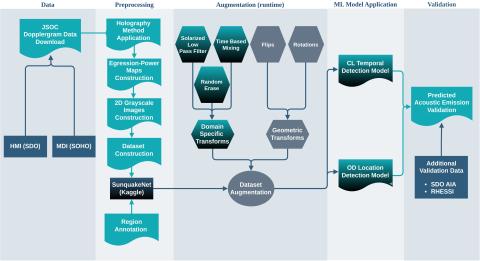
A Machine Learning Enhanced Approach for Automated Sunquake Detection in Acoustic Emission Maps
Vanessa Mercea, Alin Razvan Paraschiv, Daniela Adriana Lacatus, Anca Marginean, Diana Besliu-Ionescu introduce an acoustic holography processed dataset constructed from egression-power maps of solar active regions for Solar Cycles 23 and 24. They then present a pedagogical approach to the application of machine learning representation methods for sunquake detection using AutoEncoders, Contrastive Learning, Object Detection and recurrent techniques, which we enhance by introducing several custom domain-specific data augmentation transformations.
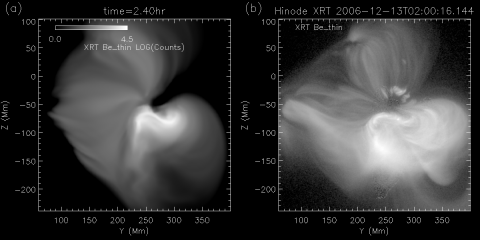
An improved MHD simulation of the 2006 December 13 coronal mass ejection of active region NOAA 10930
Yuhong Fan presents an magnetohydrodynamic (MHD) simulation of the coronal mass ejection (CME) on 13 December 2006 in the emerging $\delta$-sunspot active region 10930, improving upon a previous simulation by Fan (2016). It is found that the kinematics of the erupting flux rope is significantly affected by the open magnetic fields and fast solar wind streams adjacent to the active region.
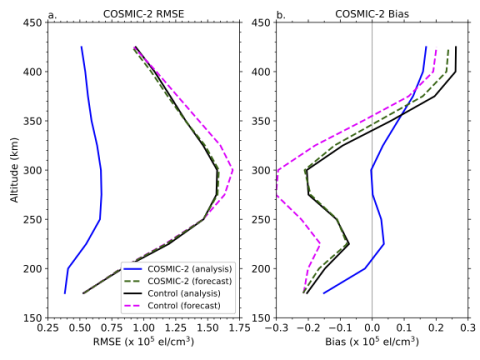
The Impact of Assimilating COSMIC-2 Observations of Electron Density in WACCMX
N.M. Pedatella and J.L. Anderson present study investigates the impact of assimilating electron density profiles from the Constellation Observing System for Meteorology, Ionosphere, and Climate-2 (COSMIC-2) mission in a whole atmosphere data assimilation system. The observations are assimilated into the Whole Atmosphere Community Climate Model with thermosphere-ionosphere eXtension (WACCMX) using the Data Assimilation Research Testbed (DART) ensemble adjustment Kalman filter.
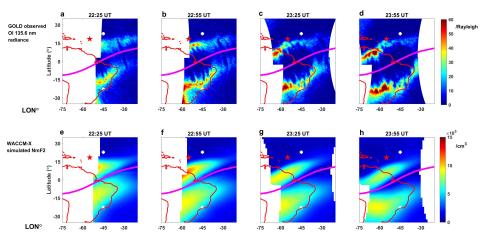
Hemispherically Asymmetric Evolution of Nighttime Ionospheric Equatorial Ionization Anomaly in the American Longitude Sector
Xuguang Cai, Liying Qian, Wenbin Wang, Joseph M. McInerney, Han-Li Liu, Richard W. Eastes in JGR–Space Physics reveal that the Global-scale Observation of Limb and Disk (GOLD) mission observed distinct post-sunset, hemispherically asymmetric evolution of the equatorial ionization anomaly between 40° and 50°W on 19 November 2018, with the southern crest shifting poleward but the northern crest remaining in the same latitude region. The Whole Atmosphere Community Climate Model-eXtended captured this phenomenon.
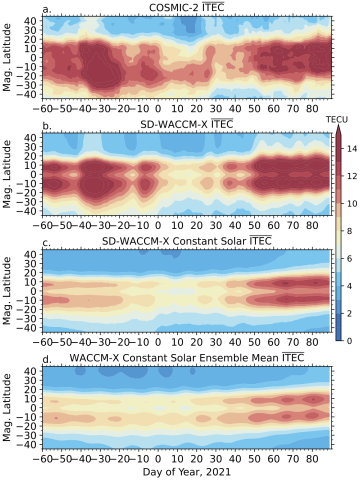
Ionosphere Variability During the 2020-2021 SSW: COSMIC-2 Observations and WACCM-X Simulations
Nicholas Pedatella investigates the variability in the ionosphere during the 2020-2021 sudden stratospheric warming (SSW) using a combination of Constellation Observing System for Meteorology, Ionosphere, and Climate-2 (COSMIC-2) observations and Whole Atmosphere Community Climate Model with thermosphere-ionosphere eXtension (WACCM-X) simulations. The unprecedented spatial-temporal sampling of the low latitude ionosphere afforded by COSMIC-2 enables investigating the short-term ($<$ 5 days) variability in the ionosphere during the SSW event
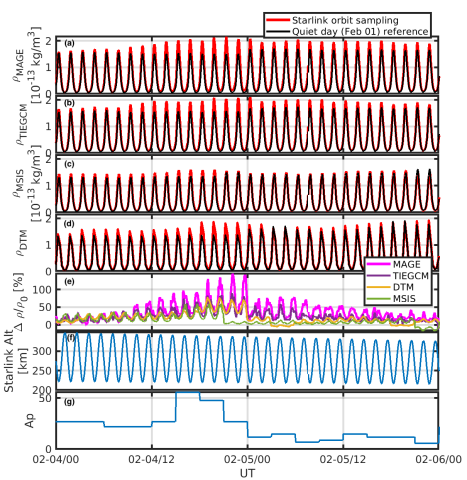
Thermospheric Neutral Density Variation during the "SpaceX" Storm: Implications from Physics-based Whole Geospace Modeling
In this study, Dong Lin, Wenbin Wang, Katherine Garcia-Sage, Jia Yue, Viacheslav Merkin, Joseph McInerney, Kevin Pham, and Kareem Sorathi compare the performance of a state-of-the-art physics-based, fully coupled whole geospace model and empirical models in predicting the neutral mass density variation in the thermosphere. It turns out that the physics-based model is more accurate in capturing the magnitude of storm enhancement of neutral density.
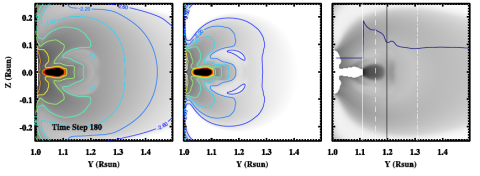
Synthetic Lyman-α Emissions for the coronagraph aboard the ASO-S mission I: an Eruptive Prominence-cavity System
J. Zhao, P. Zhang, S. E. Gibson, Y. Fan, L. Feng, F. Yu, H. Li, and W. Q. Gan present a discussion of the evolution of the eruptive prominence-cavity system as observed by the Lyman-α Solar Telescope (LST), analyzing the synthetic emissions both on the disk near the limb and in the corona as viewed by the coronagraph, as well as the three-dimensional data of MHD simulations.

Coronal Cavities in CoMP Observations
A. Ruminska, U. Bak-Steslicka, S. E. Gibson, and Y. Fan studied quiescent coronal cavities observed between 2012 and 2018 by the Coronal Multichannel Polarimeter (CoMP). The majority of cavities in their study had a characteristic lagomorphic structure in linear polarization. They additionally compared cavity widths as observed in intensity with sizes of their linear polarization signatures for 70 cavities and found that both features are strongly correlated.